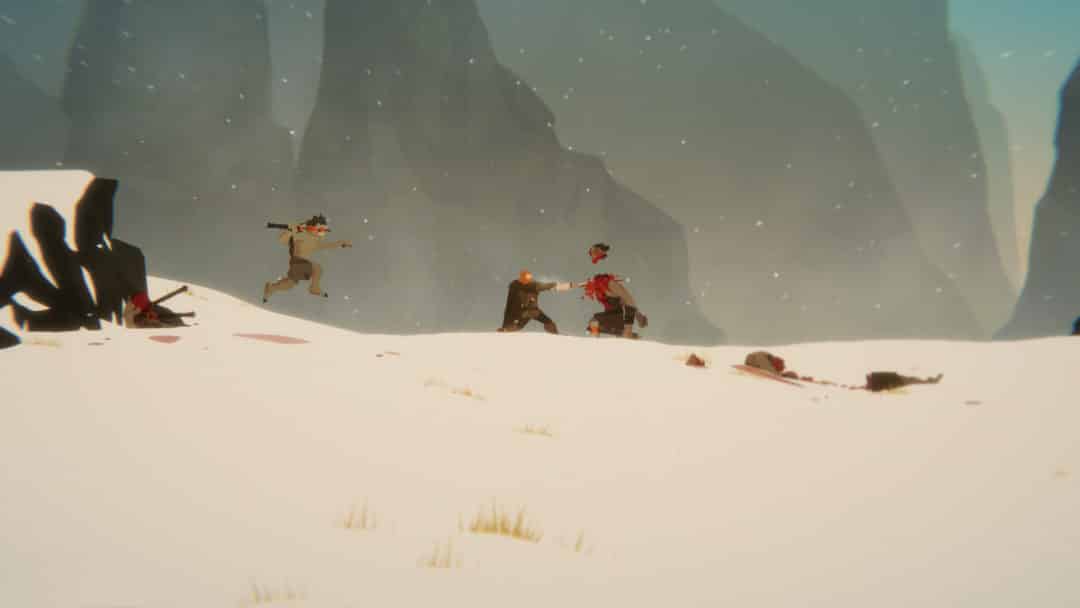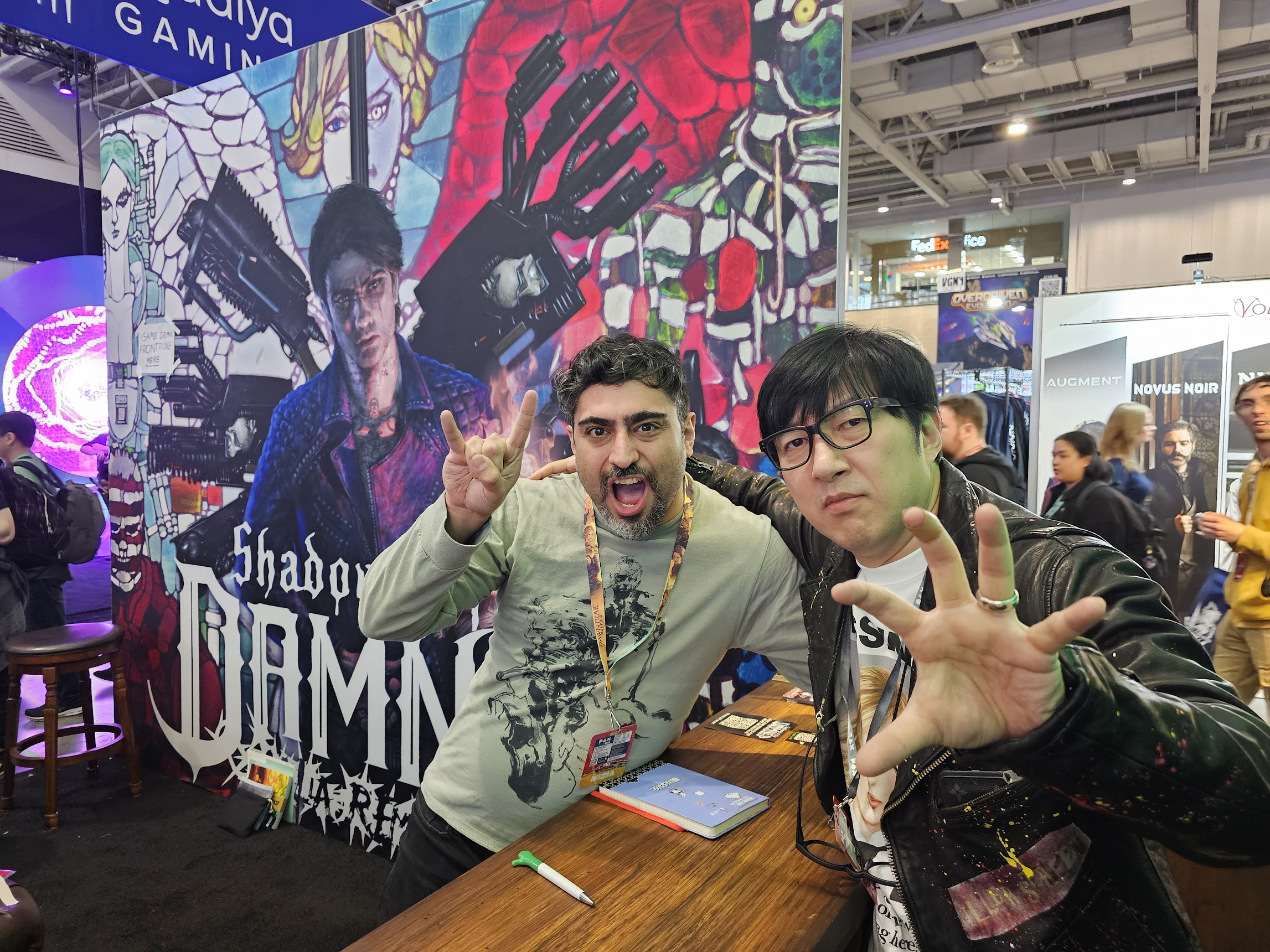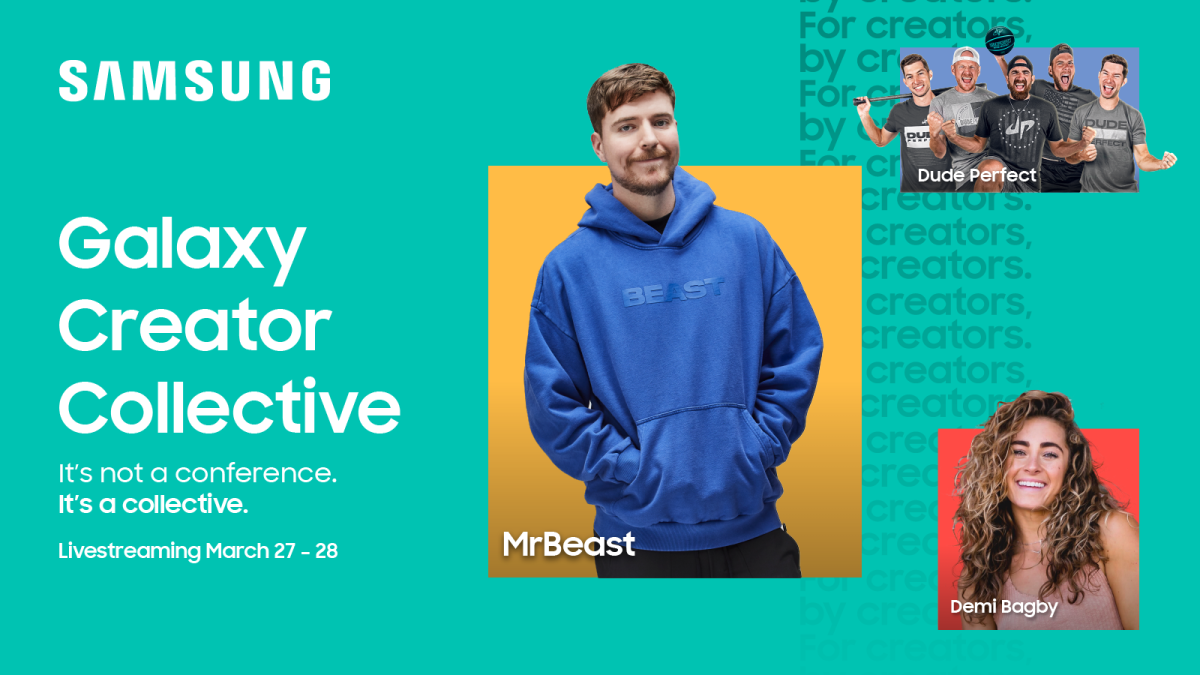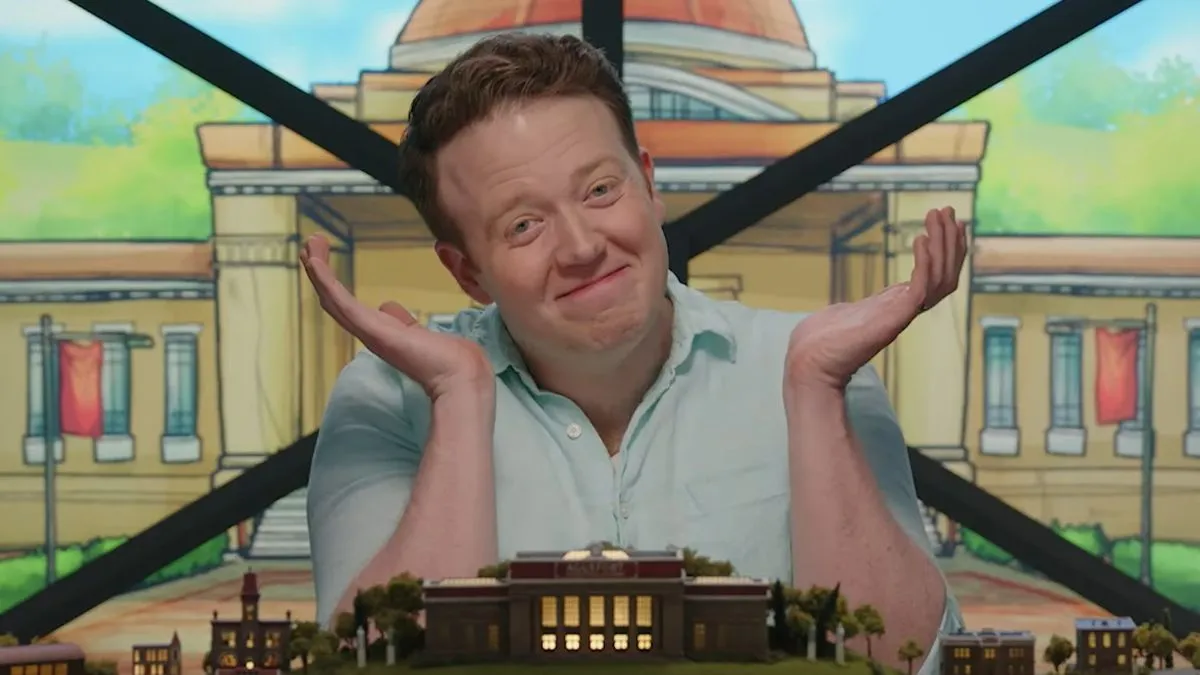Sara Kitamura said there are three main inspirations for sidescrolling combat adventure Unto the End: Dark Souls, Punch-Out!!, and the entire country of Iceland.
“We’d just been to Iceland and Northern Scotland,” she explained, describing the prototyping process that eventually generated Unto the End. “There’s something that felt so special about being in that winter cold, just how isolated it felt driving through those landscapes.”
“When we were in South America, we had this car in Chile, up in Atacama, in the high desert,” expanded Stephen Danton, Kitamura’s husband and co-developer. “It had this tire that would run out of air after about six hours. If you’ve ever been to Atacama, there’s no one around, right? You drive a little bit out of town and you’re in the middle of nowhere. Sara and I would take this car out, –we we had no map or anything — we’d just turn down some road and get out and walk around. And in the back of our minds we knew that this thing could break down at any minute, and we might not be able to get back home. But that was a part of the adventure.”
Unto the End is the first major title from 2 Ton Studios, named for the two Dantons who make up its entire workforce. The game tells the story of “the father,” a humble, heavily bearded viking-like figure separated from his wife and daughter by a Tolkien-esque war between multiple fantasy races. The father must travel from the depths of the darkest caves to the snow-capped peaks of towering mountains to reunite with his family, engaging with orcish ghouls along every step of his journey.
Misty mountains and snarling goblins may be all around in Unto the End, but the father is no Aragorn. The tone Danton and Kitamura are trying to strike is epic, but not necessarily heroic.
“We focus everything around a father who is fighting, not because he’s angry and trying to kill everything, but because it’s the most expedient way home,” Danton explained. “He doesn’t really have any other way to communicate with these things. Two people who can’t speak to each other come into contact, and just like in the real world, a lot of the time that turns into a fight.”
But Unto the End isn’t all death and destruction. The story provides moments that may be resolved nonviolently. An early encounter with a creature tending to a wounded ally can be treated like a standard mini-boss encounter, but if the father approaches with a sheathed weapon, he can pass by in peace. Especially charitable players can even offer healing herbs and potions to aid the ghoul’s injured companion. Each decision results in a different outcome, which will have knock-on effects later on in the father’s odyssey.
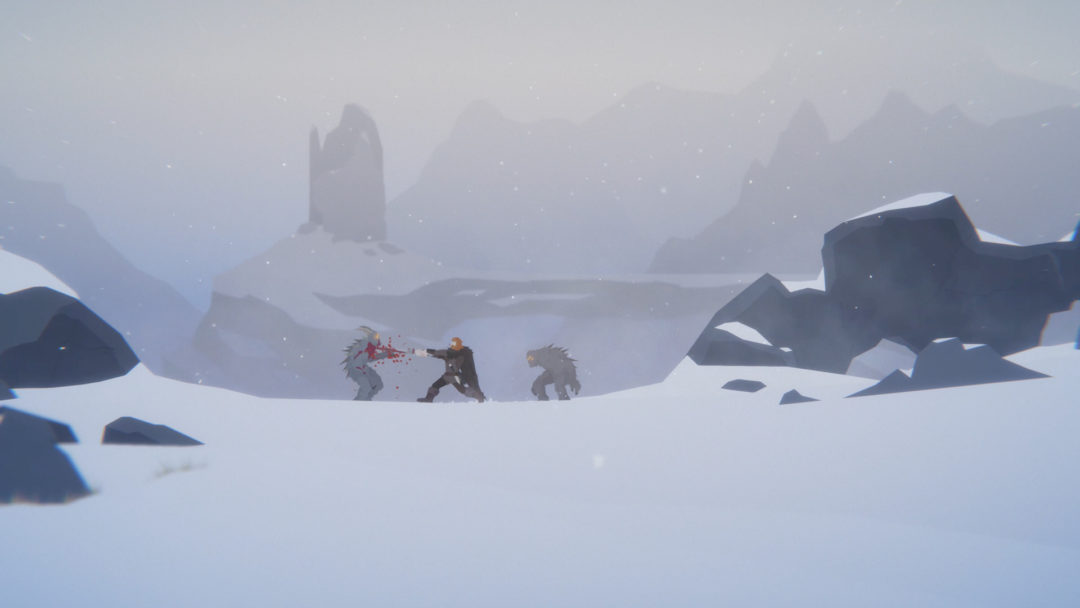
When forced to fight though, Unto the End features a surprisingly robust combat system that takes its inspiration from fighting games with high skill ceilings and often punishing difficulties. The foundation of the system, inspired by Street Fighter, is the ability to aim either high or low with attacks and blocks.
“We spent the first year of the project in a blue room with a white ground, just prototyping combat,” Danton said, he and Kitamura playing against each other. “When we started out you could attack, you could move, and you could block, and then we gradually layered things on. In 2D, judging Y-distance, high and low, makes a lot of sense. We also realized, another Street Fighter thing, that distance between guys is very important. Zoning is a whole thing in Street Fighter that people have written manuals on.”
The father and his opponents share the same move set, able to dodge under or through attacks, fake high before delivering a real blow low, throw a dagger, charge to knock enemies to the ground, and use all manner of other underhanded tricks to gain an advantage. The combat toolkit is robust, but importantly, it never grows. The father begins the game with every ability he’ll ever need to make it to the end of his journey.
“I always loved the purity of the Punch-Out!! model,” Danton explained. “My brother and I grew up across the street from these two kids. They were Nintendo guys, and we were Sega guys. Every once in a while we’d exchange consoles with each other, and then we got to play Link to the Past, or Punch-Out!!, and they really made a big impression on us. Little Mac has all his moves from the beginning, and every opponent has their unique set of moves, and it’s that simple. It’s all player skill. There are these choke points where, if you don’t know to block, Piston Honda is really hard. If your timing on dodges isn’t good, Soda Popinski will mop the floor with you. If you can’t read attacks, you’ll never beat Bald Bull. So we kind of applied that.”
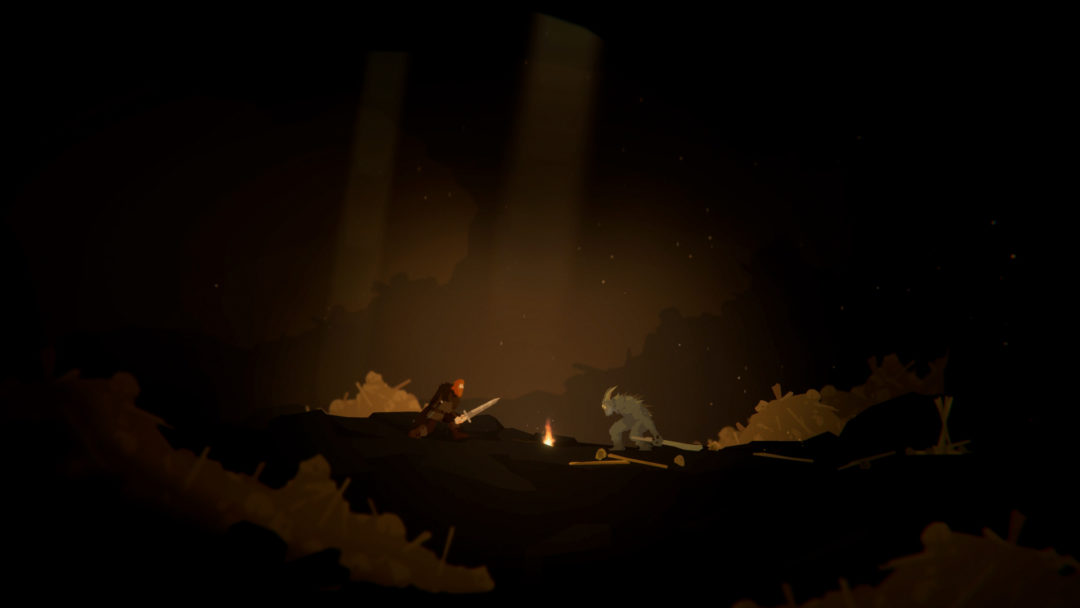
Terrain plays a crucial aspect in combat as well. Enemies can be slammed into walls or shoved off cliffs, and achieving high ground yields a tactical advantage. Cave systems can be pitch black, which handicaps the father but not enemy creatures that can see in the dark. Keeping a torch close to provide meager light is critical in these situations, and Unto the End is unforgiving about equipment.
“If you lose your torch, if you drop it down a hole or something like that, it’s gone until you make another one,” Danton said. “If you hit a wall sparks fly out, and you get a little bit of illumination that way. We actually had one play tester, a couple of months ago, he played for about 10 minutes with no torch. But he had a blast! He was scared all the time, and hitting walls, and figuring out sonically, and with little visual aids, how to move around.”
“That actually goes back to an experience we had in the real world,” Kitamura expanded. “We were walking through an old lava tube in Hawaii, and when you turn a corner, you just keep going in, and the light finally disappears from the entry. And your flashlight is so useless, it honestly makes it scarier. All the weird stalactites, and stalagmites, you can feel them touching you. It’s crazy just how pure dark it is. You’re like, ‘There’s no reason we should be scared — there’s no monsters in here.'”
It might be tempting to assume that darkness and fear are what Unto the End borrows from Dark Souls, but Danton claims he drew inspiration instead from that cultural behemoth’s hands-off approach to storytelling. He isn’t interested in mimicking the “interactive movie” style that recent hits like God of War have utilized to great effect.
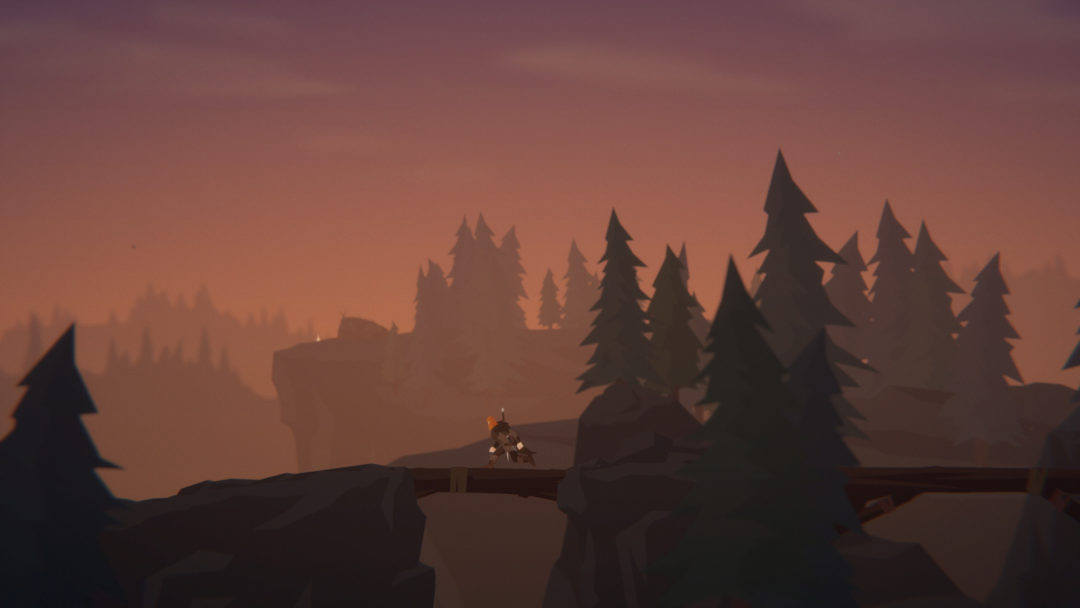
“I don’t want to make interactive movies. I want to make video games,” he explained. “Dark Souls was the thing that disrupted the industry. It came out and it bucked all the trends. Everything was going in one direction; then Dark Souls came out and said, ‘No, you can still do games that don’t hold your hand, or that are unforgiving.’ I’m most fascinated about games with regard to how they can tell stories in a game-specific way, rather than games that use cinematic or classic literature techniques to tell stories.”
“The story of Unto the End emerges as a result of the player’s actions in the world,” Danton continued. “There are these key moments, at six or seven points, where the player can choose to fight, to ignore, or to befriend another character.”
Not surprisingly, given the pair’s history of wanderlust, the game’s pacing reminds him of world travel.
“If you backpacked for a couple of months across Europe, you might have three or four key moments that you’d be able to talk about, and those are really the pivotal moment in your journey that you would share with other people,” he explained. “So that was our hope.”
Unto the End comes out next year for PlayStation 4, Xbox One, Switch, PC, and macOS.

